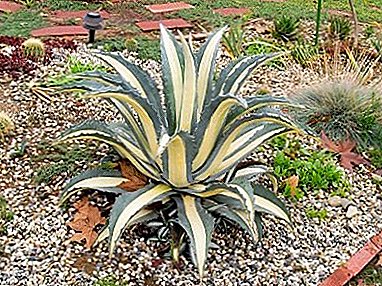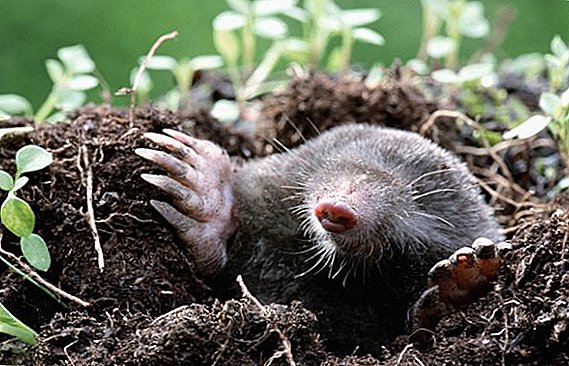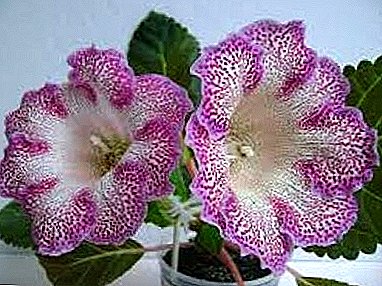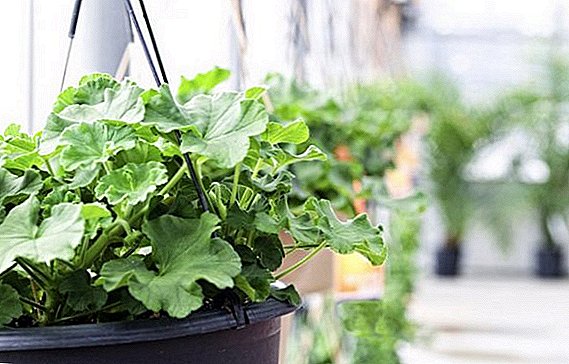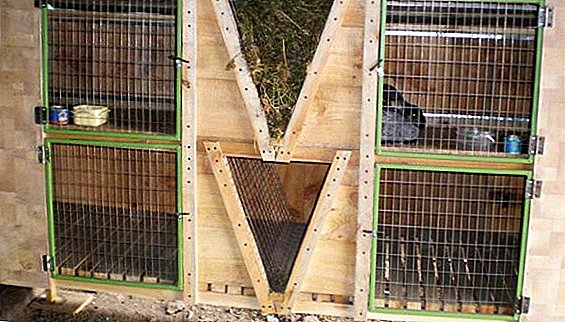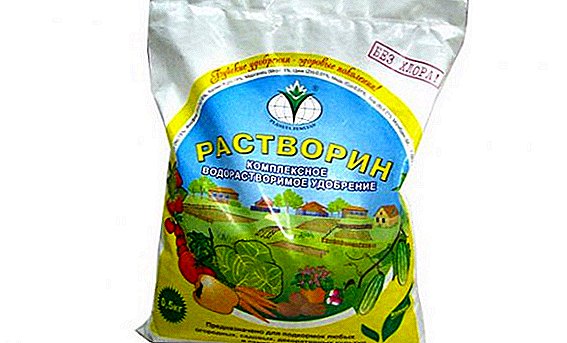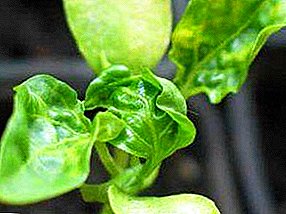
This magnificent flower can be an ornament to any garden plot.
But in order for the garden lily to look good and give plenty of flowering, you need to follow some rules for caring for it.
Secrets correct landing
Planting lilies in open ground requires compliance with important rules for their location on the site and compliance with planting technology.
Where to plant
 First of all, you need to choose the right place for planting lilies.
First of all, you need to choose the right place for planting lilies.
Do not plant this flower in shady places.
Light shade tolerate only some varieties of lilies, but plant them close to the trees is not worth it.
For lilies fit open sunny areas, preferably protected from wind and drafts.
How to prepare the soil
The soil for this flower needs a light, breathable. Lily is very sensitive to waterlogging.
With an excess of moisture, the bulbs will rot, so a place with stagnant water will not work for them.
If on your site heavy soil with high density, you need to make it before planting peat or sand. To increase nutritional value, add humus (10 kg / m). Before digging it is also necessary to make a complex fertilizer (100g / m).
Landing time
 The most favorable time for planting is autumn. Plants at this optimum planting time in the fall - early October.
The most favorable time for planting is autumn. Plants at this optimum planting time in the fall - early October.
However, spring planting is possible, and for some varieties is obligatory. It is carried out after the onset of stable heat, when the threat of frost has passed.
Try to catch the moment when dry days have not come, and there is enough moisture in the soil.
The exact time favorable for disembarking is difficult to call, since it depends on the region and specific weather conditions.
Bulb preparation and planting technology
Soil need to dig and remove from it all plant residues. Soil acidity is regulated by wood ash or lime (300 g / m). To place the bulbs, make holes 40 cm in diameter, put a layer of sand or small gravel on the bottom, sprinkle it with soil.
Go through the bulbs, discarding rotten and diseased specimens. Bulbs clean of flowering flakes, process the solution of potassium permanganate.
Planting depth is chosen based on the size of the bulbs. Small plants are planted to a depth of 6-7 cm. Large ones - up to 15 cm. Form a small mound around the bulb, compacting the soil. Ground the surface with peat, sawdust or small needles.
Cultivation and care in the open field
How to care for lilies in the garden? Growing lilies in the open field is not very difficult, but care depends on what period is carried out.
Care during the growing season
During growth and flowering lilies require timely fertilizer and proper watering.
Watering rules
 Lily is extremely sensitive to an excess of moisture in the soil, so it should be watered moderately.
Lily is extremely sensitive to an excess of moisture in the soil, so it should be watered moderately.
At the same time, if the weather is dry and hot, then you need to shed plenty of land with plantings several times during the season.
If you do not. The bulbs do not accumulate enough moisture in the tissues, and subsequently dry out during storage.
Watering lilies strictly under the root, slightly departing from the stem. Moisture on the leaves can cause them to rot. Ideal for this flower would be drip irrigation, because it allows you to adjust the amount of moisture.
Care during flowering
During flowering care for lilies consists of watering in combination with dressings. Water when watering should not fall on the flowers, they can rot from it. If the weather is dry and hot, the amount of moisture increases. At the end of flowering stop watering.
It is important to follow the rules of cutting flowers for a bouquet.
TIP: Part of the stalk should be left in order for the bulb to continue to develop. Cut the stem at an angle so that moisture does not accumulate on the cut.
At the end of flowering, all flower stalks are cut, leaving 20 cm stems. Despite the fact that flower stalks sticking out of the ground look unattractive, they should not be completely removed until they die out, as this will disturb the feeding of the bulbs and they will not be able to safely overwinter.
Periodic feedings
 Lily is quite demanding on nutrition, so fertilizers are applied regularly.
Lily is quite demanding on nutrition, so fertilizers are applied regularly.
But at the same time it is necessary to strictly observe the dosage of minerals, since their overabundance will have the opposite effect and sprouts will slow down the development.
The number of dressings for the entire growing season is three to four. The first is carried out in early spring, before the formation of shoots. For this purpose, nitrogen fertilizer is used, for example, ammonium nitrate (1 tbsp per square meter). The lily reacts well to the solution of mullein.
In summer, lilies are fertilized with a solution of wood ash, which promotes the formation of large flowers. During the formation of buds need to shed lilies with a solution of ammonium nitrate.
In July, superphosphate is added to the soil to strengthen the stems. This dressing helps to preserve the brightness of flowers.
Pest and disease protection
The most common lily disease is bacterial rot.
It provokes the development of fungus cold and wet soil. On the leaves, spots appear, similar to the stains of yellow color, and peduncles are gradually affected. To protect the plant from this disease will help regulation of irrigation, the elimination of nitrogen from fertilizing.
If bright orange spots appeared on the flower, it means that another disease has appeared - rust.
Rust remains on the bulbs, so they need to be carefully examined before planting and treated with fungicides. When a disease appears on the leaves, it is treated with Bordeaux mixture.
 Botrytis (or gray mold) - This is a real destroyer of the flower.
Botrytis (or gray mold) - This is a real destroyer of the flower.
With high humidity and sudden temperature changes, it appears as dark brown spots.
Protect lily help treatment with copper-containing drugs.
Yellowing of the tips of the sprouts speaks of root decay.
This disease requires radical measures - the plant will have to dig, because the rot is formed on the roots of the bulbs, and get to it without it will not succeed.
The dug bulb is cleared of lesions, treated with fungicide. If the roots are strongly affected, it will not be possible to save the bulb.
Not only diseases can cause poor lily development. This flower is also loved by numerous pests: thrips, beetle-beetle, aphid, spider mite, Khrushchev.
Insecticides will help to cope with the majority of them, for example "Inta-vir". The flyer, Pochin, Medvetoks, Grizzly are also effective in pest control.
ATTENTION: You can not destroy the poison of the beetle beetle and lily beetle, as the poison is not able to penetrate their protective shell. These pests should be removed manually.
Transplantation and reproduction
 The optimal time during which lilies grow in one place is 4-5 years.
The optimal time during which lilies grow in one place is 4-5 years.
After that, they need to dig and divide the nest.
If we neglect this process, the nests grow excessively and the lily stops blooming.
When transplanting the bulbs are dug out of the soil, divide the nest into individual bulbs.
This should be done after flowering and dying off of the whole above-ground part of the flower. Onion carefully dug, cut off the remaining stem, pruned roots.
After dividing the nest into separate copies, they are dried in a dry, cool place.
Lilies are planted on a new site at the end of September - beginning of October. If you want to plant them in the same place where they grew earlier, you need to add additional peat, humus and nitrophoska to the soil.
Lily transplantation combined with the process of reproduction. This can be done in three ways:
- Onion-kids.
- Scales.
- Bulletholes.

It is applied to all grades of lilies. Suitable for separation from the mother bulb babies aged 3-4 years.
They are carefully broken off from the main bulb and planted for distillation into the soil.
This method is the most productive, since a large number of flakes suitable for separating flakes form on each bulb and many additional specimens can be obtained at once.
After breaking off the flakes, they are washed in a solution of potassium permanganate and put in a paper bag, peppered with peat. In this state, the scales are stored in a warm room, and after 3-4 weeks they grow onion.
In the soil formed onion planted in the spring, because in the winter they can not survive.
This method is used for Asian lilies. The bullets formed on the stem are separated and planted in the beginning of autumn to a depth of 2-3 cm. Before the emergence of shoots, they should be watered abundantly.
The flowering of lilies from bulbochobes begins in third year.
Detailed information and advice of experienced gardeners on all methods of reproduction of lilies can be found on our website: Reproduction of lilies.
Wintering plants
 In winter, bulbs can suffer from frost, especially in a snowless period.
In winter, bulbs can suffer from frost, especially in a snowless period.
So that they do not freeze, the area with lilies is covered with sawdust, covering nonwoven fabric or lapnik.
The main condition is that the soil under cover is completely dry.
In the spring, this shelter is removed after all the snow has melted. Do not delay with this, as under the shelter lilies begin to germinate and the shoots are deformed.
Follow all the rules of caring for lilies, and they will reward you with bright, large flowers that will look great both in the flowerbed and in any holiday bouquet.
Lily in the garden photo:





